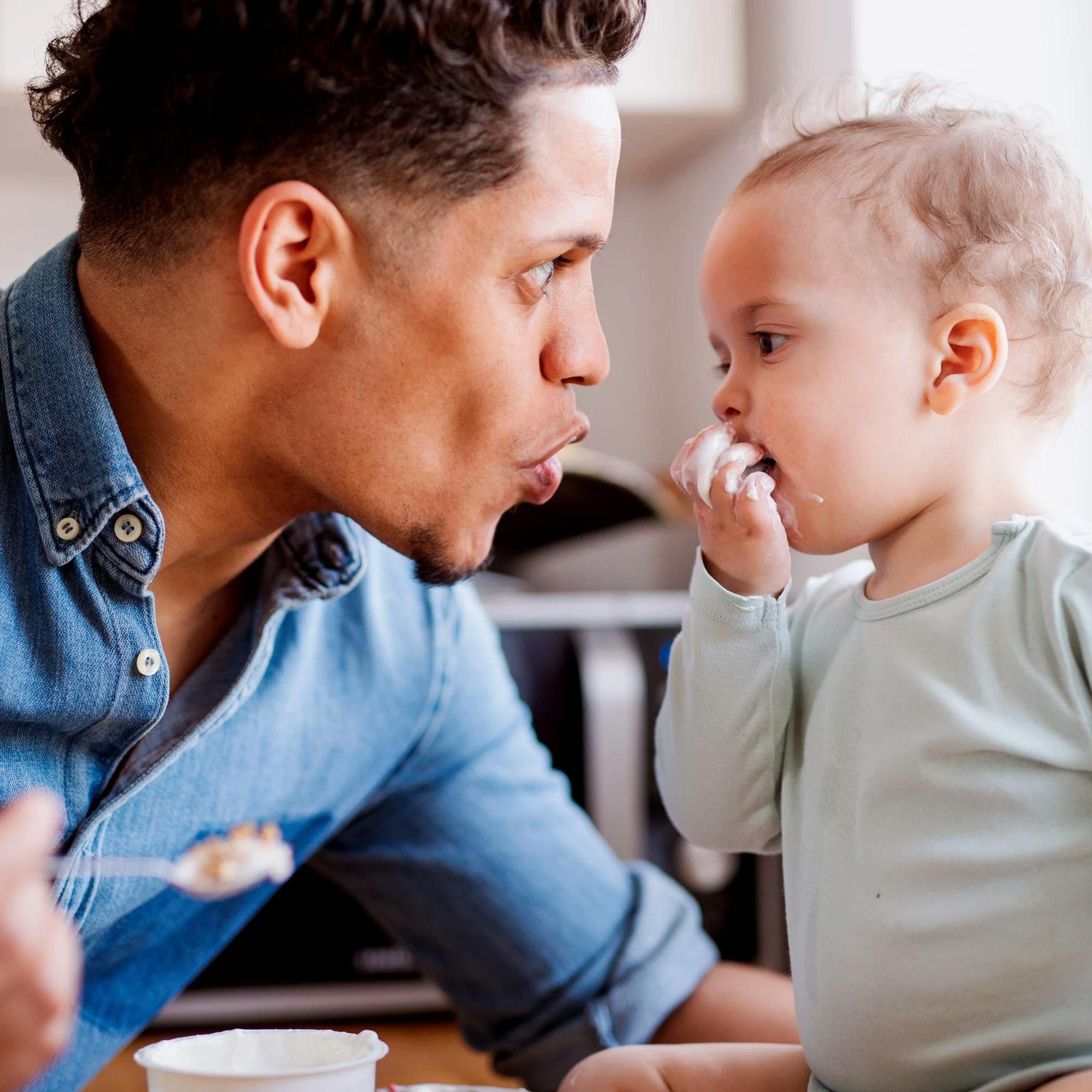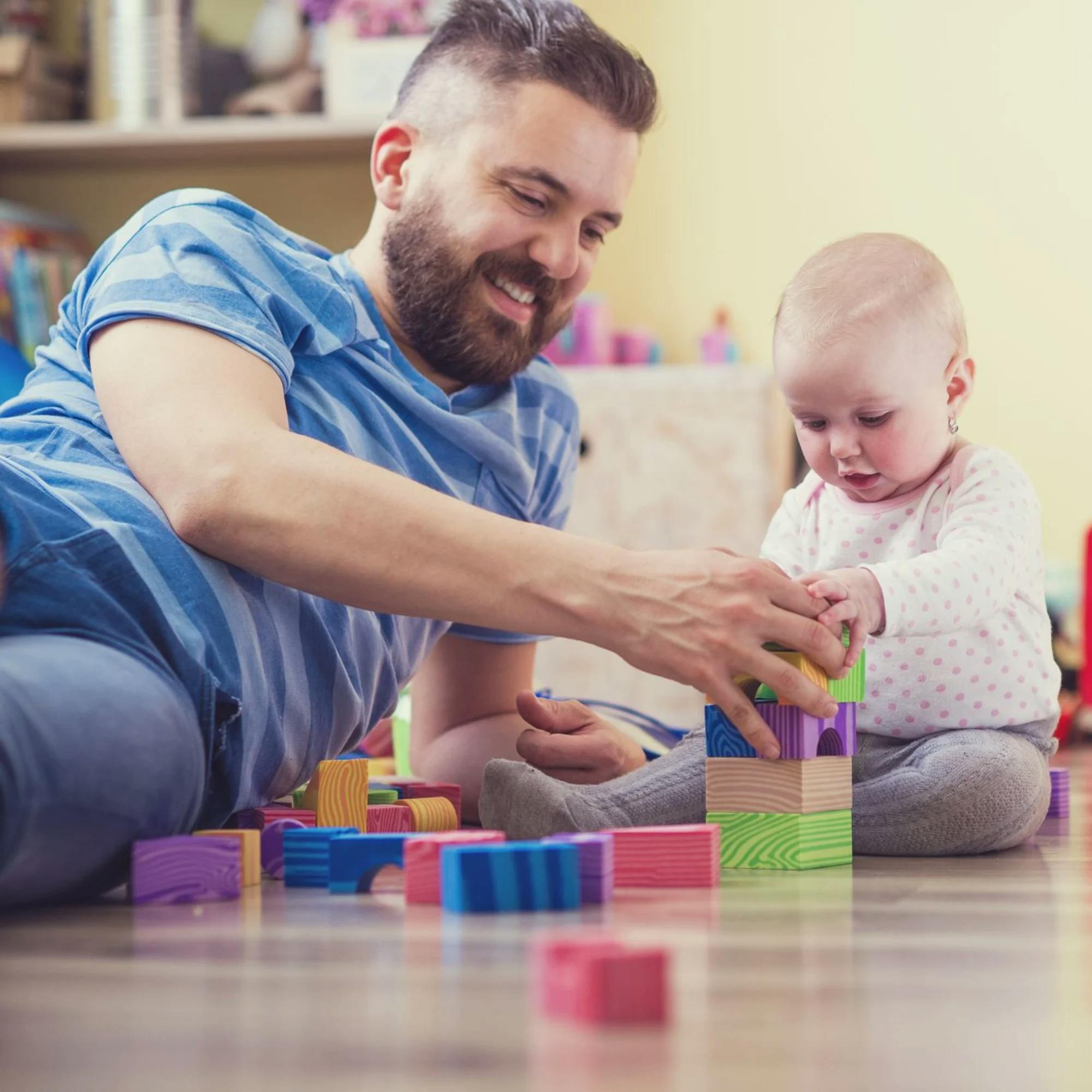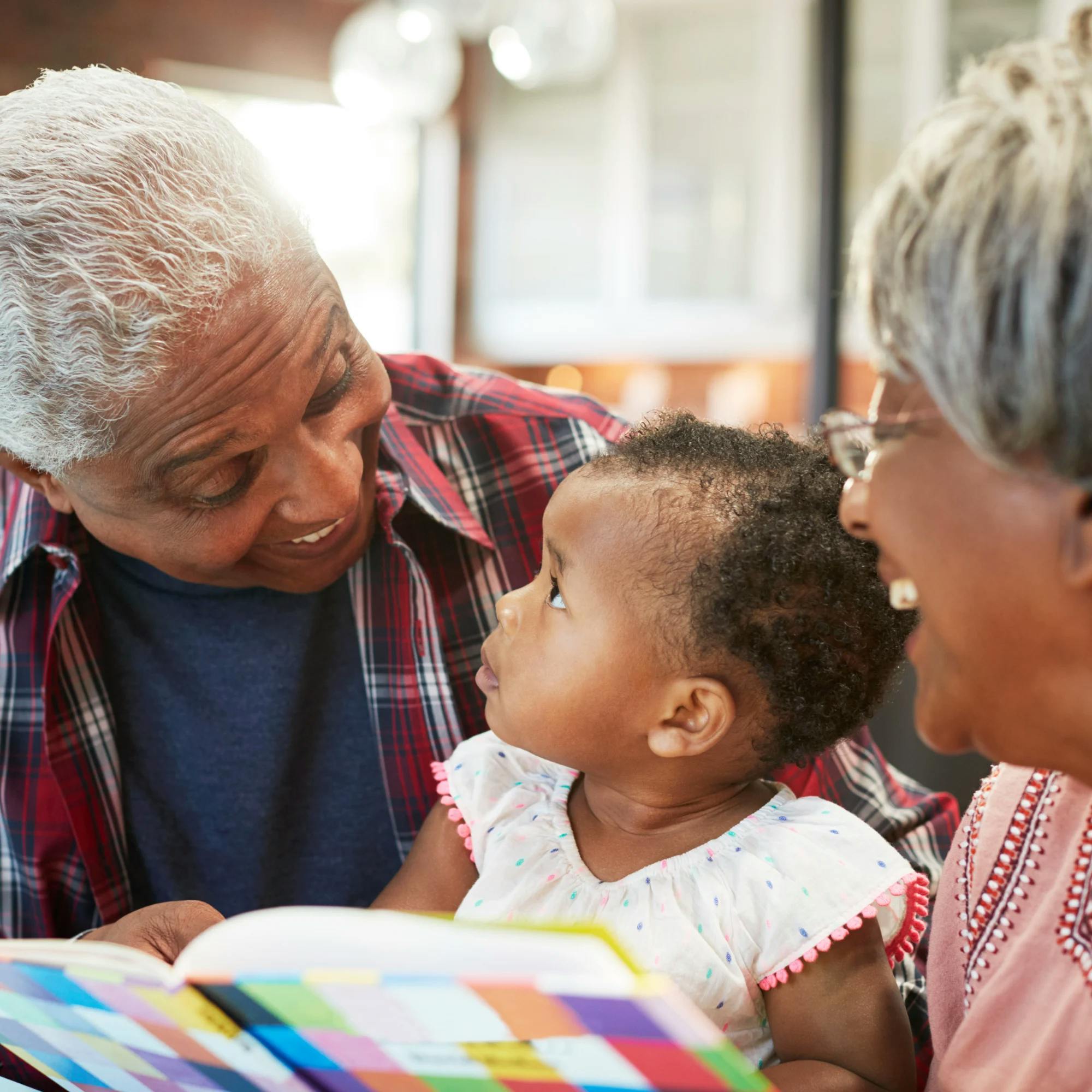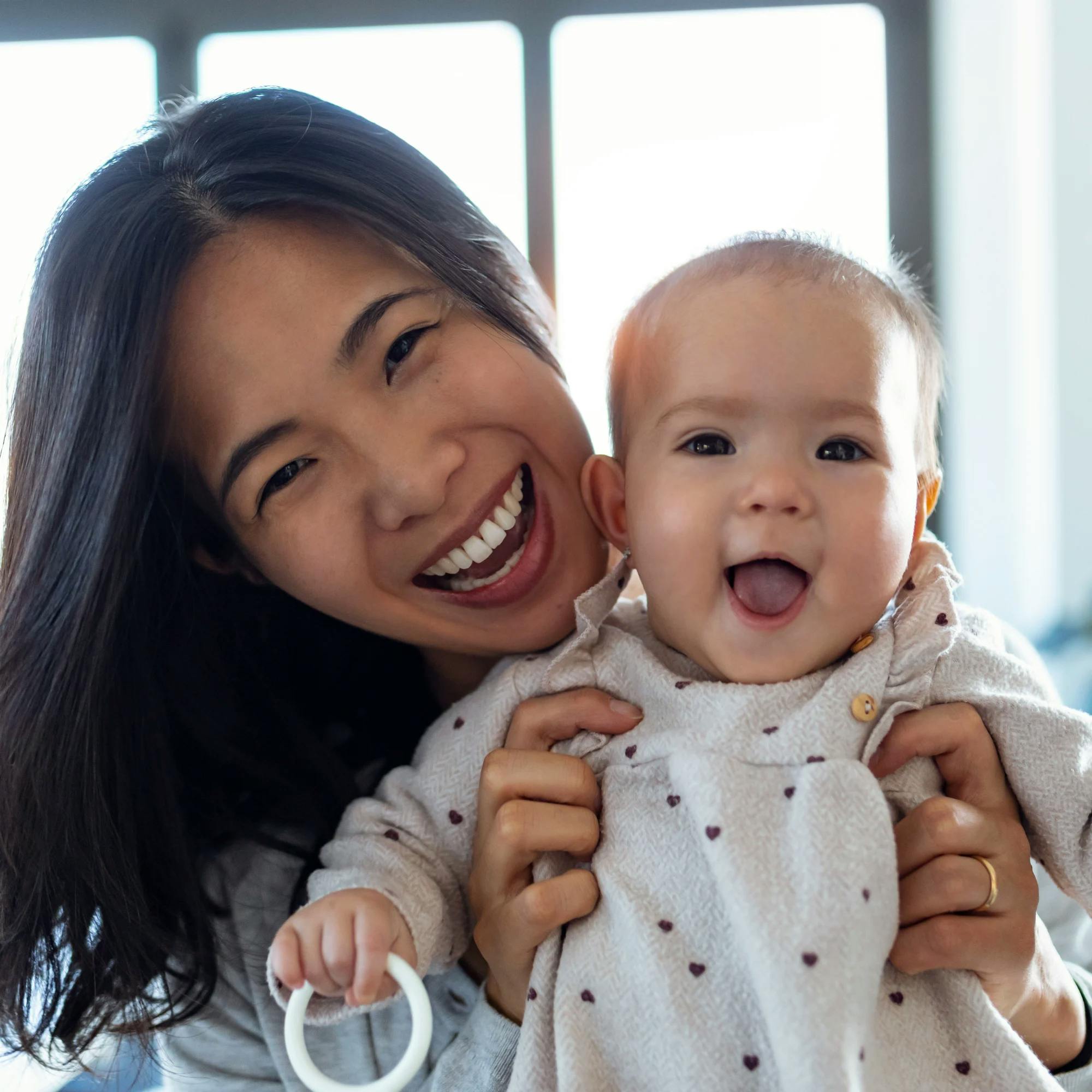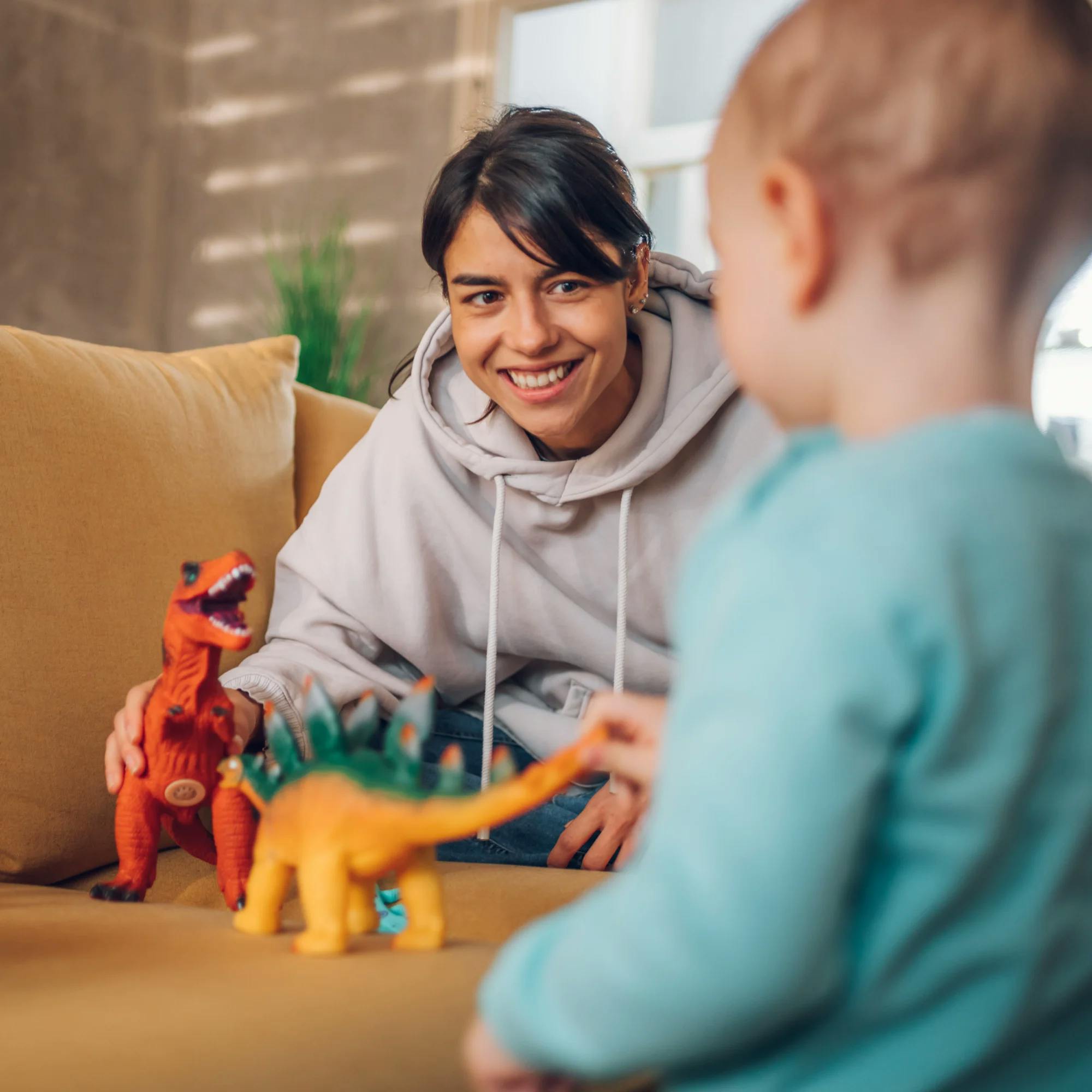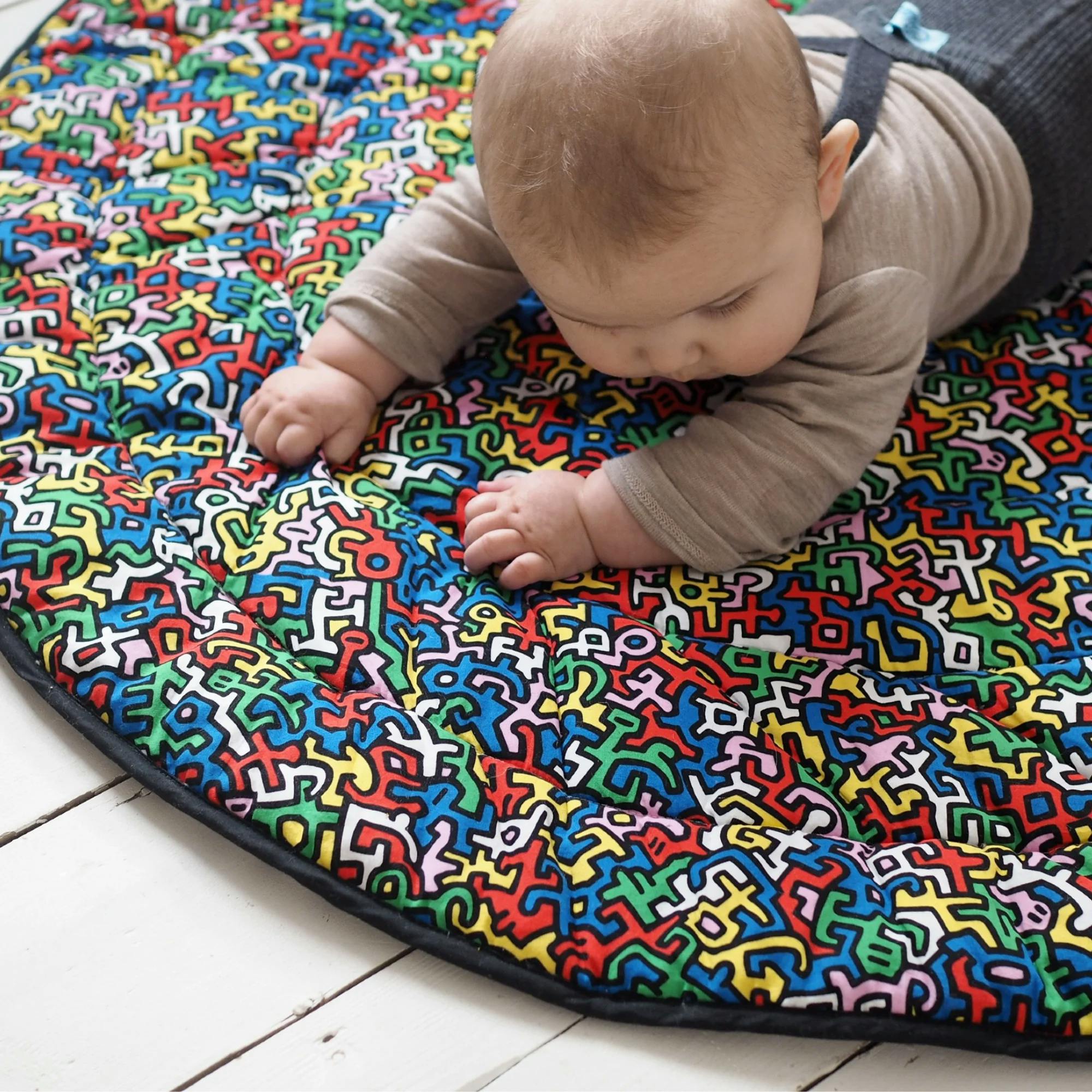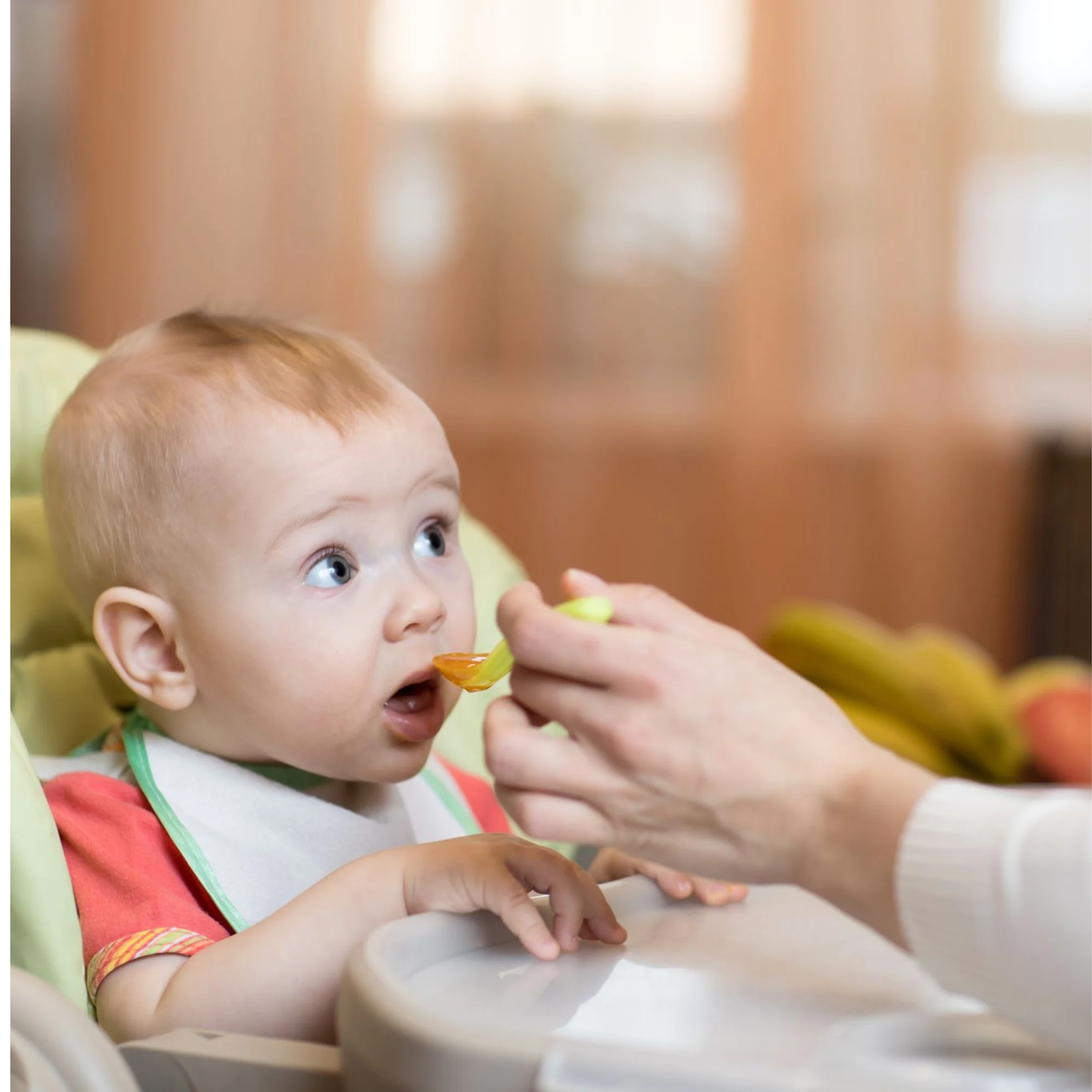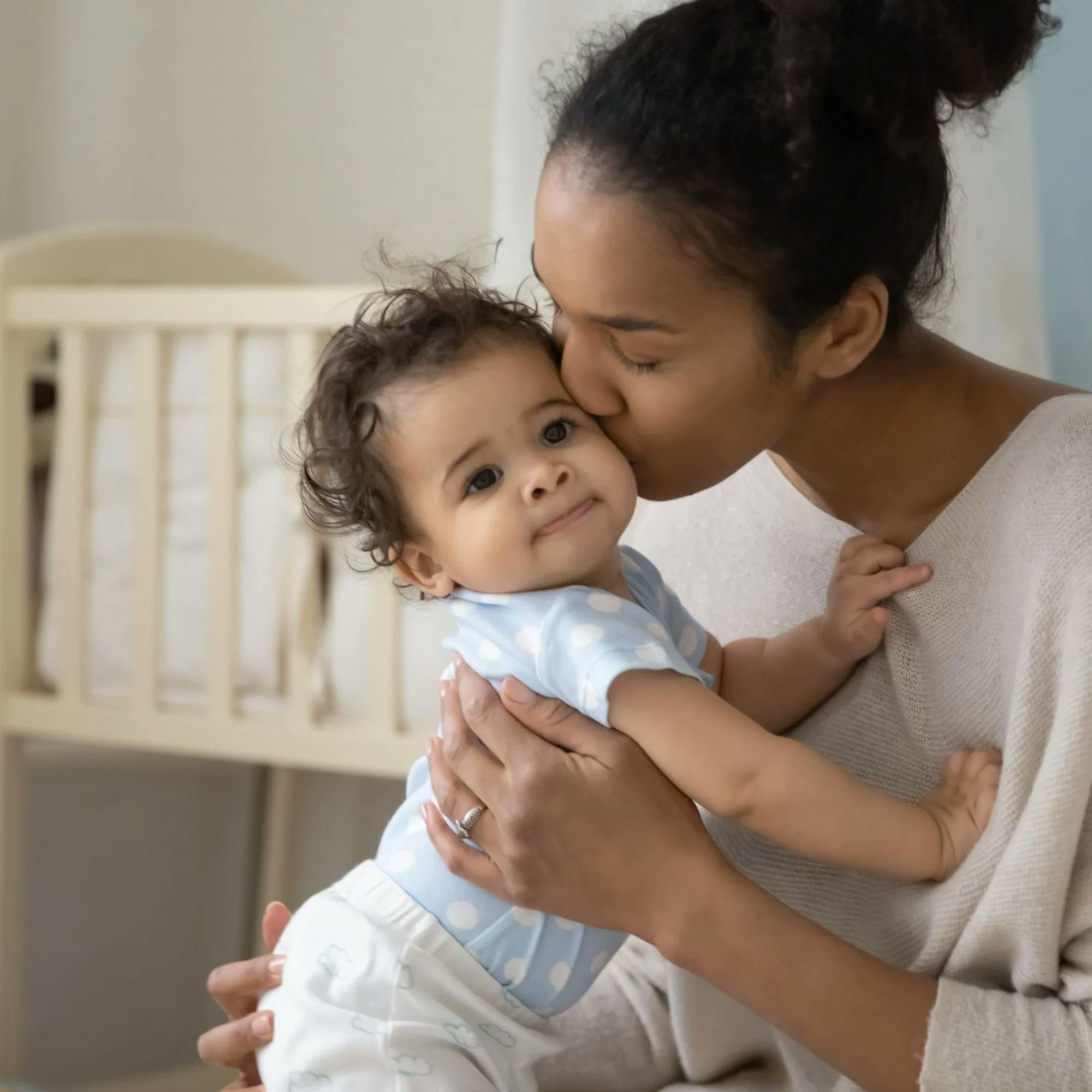It’s a special feeling to hold your baby and look at them as they look back at you. You and your baby might do this as you rock in a rocking chair, make silly faces, or sing a nursery rhyme.
Did you know that these face-to-face interactions, especially when singing, are proven to support babies’ speech and language development? A study published in 2022 looked at how well babies pay attention to people who sing to them, as well as where on the speaker's face they look. Surprisingly, the baby’s gaze shifts to the person’s mouth as the baby gets older.
Keep reading to find out why that is–and why it matters! Plus, get simple tips you can use at home to promote your baby’s speech and language through song. (Don’t worry, the ability to sing on key isn’t required.)

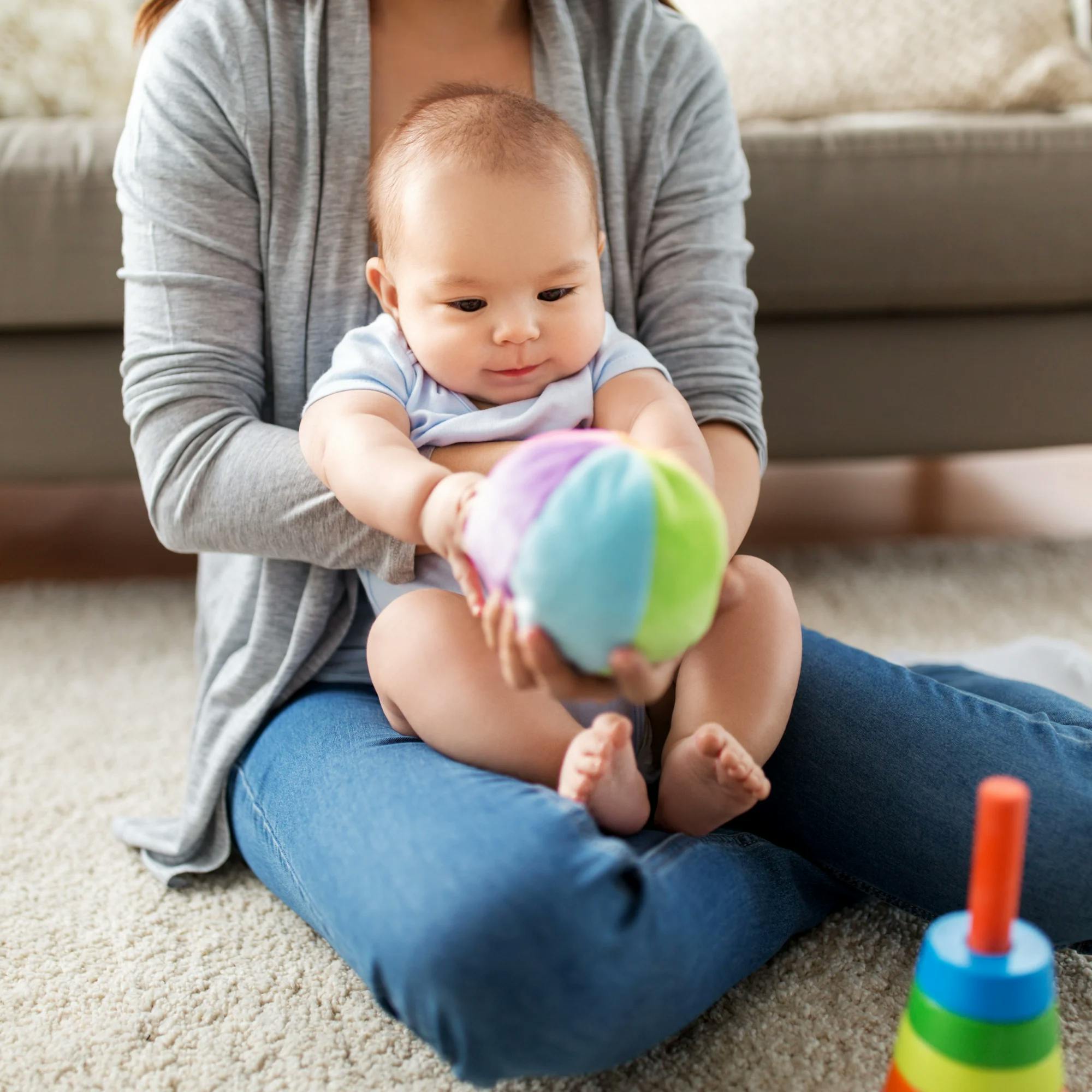
Study looks at the effects of talking and singing on babies
The 2022 study focused on something called infant-directed (ID) speech. This refers to the face-to-face interaction between a caregiver and their baby as the caregiver speaks or sings to the baby.
Infant-directed speech is essentially parentese, which is a specific way to speak to babies. It involves speaking at a higher pitch, talking slowly and clearly, elongating your vowels, exaggerating your facial expressions, and using simple sentences with correct grammar. You might know it as “baby talk,” but in fact, our tendency to talk to babies in this way is scientifically proven to enhance their speech and language skills.
The study observed and assessed babies' reactions to infant-directed speech, as well as infant-directed song. These reactions included shifts in eye gaze.

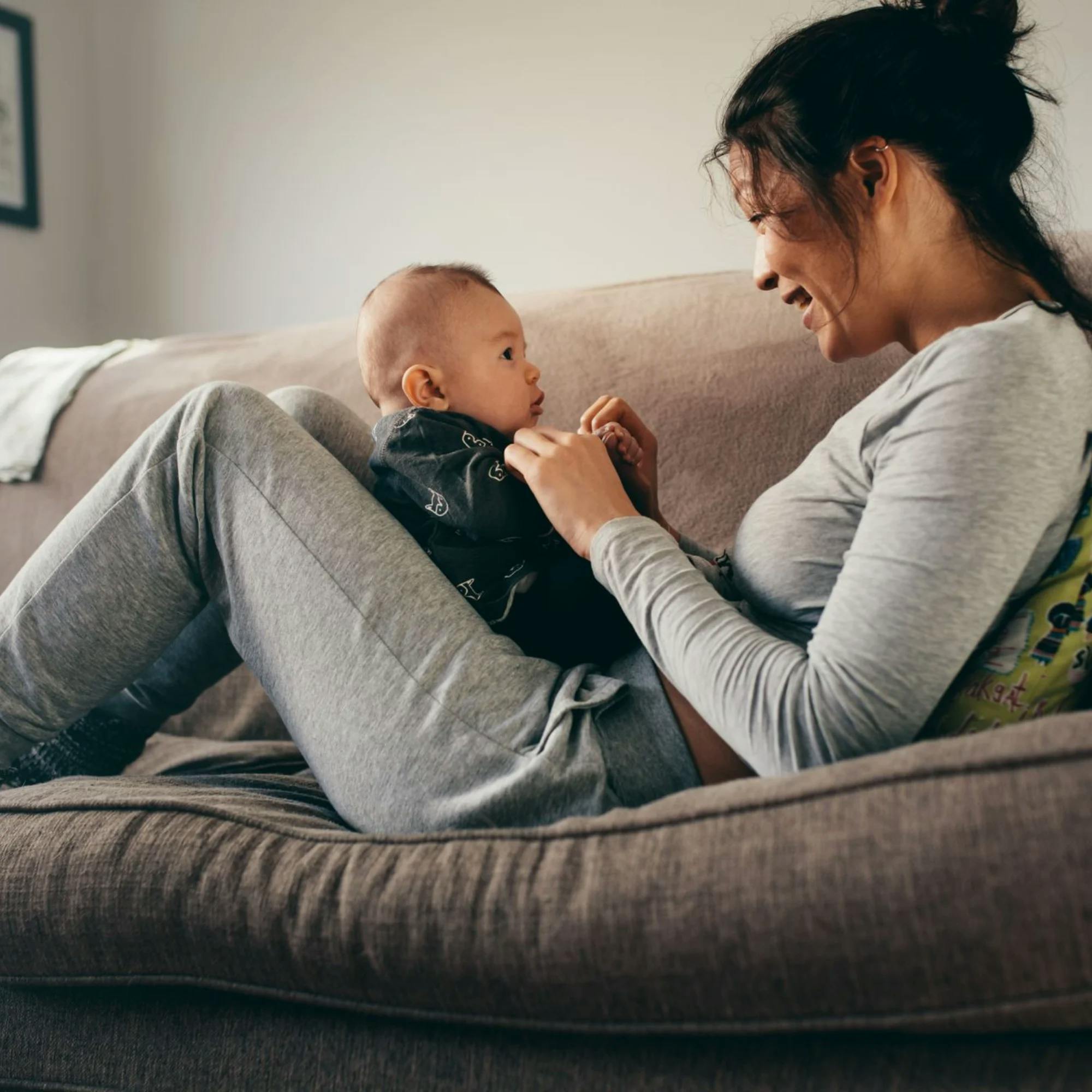
How was the study completed?
Two hundred and ninety-nine infants participated in the study. They were observed at ages 3, 4, 5, 6, 9, and 12 months.
The babies were shown audiovisual clips of women using infant-directed speech and infant-directed song. The babies’ eye movements as they viewed the clips were tracked at each of the above ages.
What were the study findings?
The research showed that as babies got older, they looked more consistently at the speaker’s mouth during both speech and song clips. But they looked at the mouth more often during singing compared to speaking only.
The babies were observed to look more generally at the speaker’s entire face during the first 6 months of life. They began to shift their focus to the mouth of the speaker at ages 6 months and older.
Babies tended to look more at the mouth of the speaker when the following characteristics occurred:
Slower vocalization rates. Speaking slowly and emphasizing words are aspects of parentese. So it’s not a surprise that slower vocalization, even during singing, would grab babies’ attention.
Lower rhythmic variability. This relates to rhythmic predictability, like in singing. Think about songs like "Twinkle, Twinkle, Little Star" and "B-I-N-G-O." You know the tune and you can predict the beat that follows. Babies tended to look at the speaker’s mouth when the song had fewer variations in its rhythm.
Lots of smiling from the speaker. Babies paid more attention when the speaker had a pleasant facial expression and smiled often.
The researchers concluded that "song appears to be a particularly powerful way to attract infants’ attention and naturally guide their looking behavior."


Why does a baby’s eye gaze matter?
You may be wondering why this “looking behavior” is so important. It’s actually a big part of how babies learn to talk.
As babies watch a caregiver's mouth movements and listen to the sounds and words they say, they begin to learn how to form these sounds and words themselves. They also increase their skills in receptive language (how they comprehend language) as they begin to understand more vocabulary words.
As babies watch a caregiver's mouth and listen to the sounds and words they say, they begin to learn how to form these sounds and words themselves.
Research discussed in this study explains, “Mouth looking at 6 months of age later predicts language development at 12 months of age.” So, if babies are more likely to look at your mouth when you sing to them, it follows that singing will help their communication development!

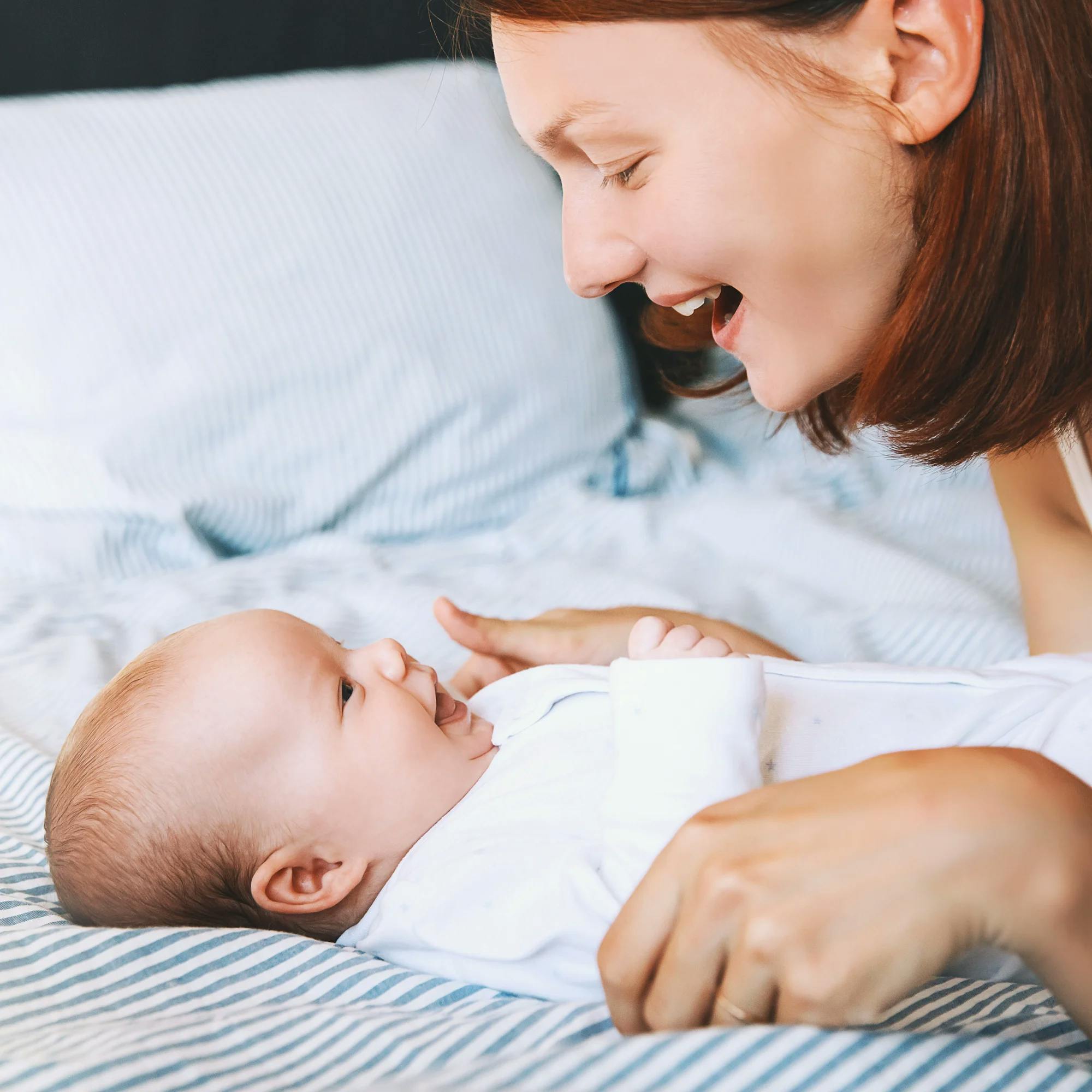
5 ways to sing, talk, and engage more with your baby
As a parent or caregiver, you play a huge role in your baby’s speech and language development. By interacting face-to-face with your little one, you won’t just be having fun together. You’ll be helping them learn to understand language and begin to communicate!
Let’s look at 5 fun, easy ways you can sing more often to your baby and interact face-to-face.
1 Find natural times when you and your baby are face-to-face
You can sing songs while you’re nursing or bottle feeding your baby, or when they’re sitting in their high chair and looking toward you. You can also sing while getting your baby dressed or changing their diaper. You’re already doing these tasks, so you might as well use them to your baby’s advantage!
2 Try lots of nursery rhymes
Simply begin singing new (or old!) songs, like “Old MacDonald” and “The Itsy Bitsy Spider,” and see what your child responds to most. Be sure to smile often, and don’t forget to make it fun! Think of this as a playful activity to do together, not a time for teaching your child. The more engaged and interactive the routine is, the more your child will naturally learn while you sing.


3 Pick songs that use gestures
Learning gestures is a key part of language development. Babies typically begin to imitate gestures before they begin to imitate words. So break out “The Wheels on the Bus” and start swishing your hands like a windshield wiper!
4 Make up your own songs
Don’t feel limited to nursery rhymes. Using any kind of repetitive rhythm and a sing-songy voice is sure to get your baby's attention. As you talk to your baby, put some rhythm behind the words. (We won’t tell anyone if you make up a silly dance or gestures to go along with it, too!)
Babies just want to connect with their caregivers. The sillier and more excited you are, the more they’ll focus on you.
5 Don’t forget to talk and model language for your baby
Sure, this research focuses on the importance of singing. But we know you don’t live in a musical–you can’t sing everything to your baby all day long. Simply talking to your baby is beneficial for them, even though they can’t yet answer you.
You can narrate your actions throughout the day to teach your baby new vocabulary, speech sound production, and even how to form sentences. Simply say out loud what you’re doing as you do it. For example: “It’s time to change your diaper! Let’s lie down on the mat. We put your diaper on. You are nice and clean!”
Speech and language milestones for babies and toddlers
As you speak and sing to your baby, it’s helpful to know what type of communication milestones to be looking for. Check out these articles covering milestones for infants from birth to 12 months old and toddlers 12 to 24 months old.
All babies develop at different rates, but they typically follow a general timeline. If you notice that your baby or toddler isn’t reaching some of the key speech and language milestones, be sure to talk with your pediatrician. They can make a referral for a speech and language evaluation with a speech therapist, if needed.

You can also reach out directly to a speech therapy practice to ask your questions and find out if an evaluation may be needed. Babies and toddlers aren’t too young for speech therapy–in fact, the earlier therapy begins, the sooner your child will make progress. Click here to find an Expressable speech therapist who's right for your family.
How Expressable Can Help
Concerned your child isn't reaching age-expected milestones? Looking for communication support from a professional? Expressable is a national online speech therapy practice serving children and adults. We treat all major areas of communication and feeding, offer flexible hours including evenings and weekends, and accept most major health insurance plans. We’re proud to have earned more than 3,000 5-star reviews from our clients (4.9/5 average).
Our therapy model is centered on parent and caregiver involvement. Research proves that empowering caregivers to participate in their loved one’s therapy leads to better outcomes. That’s why we combine live, 1-on-1 speech therapy with personalized education and home practice activities for faster progress.
Communication is more than words. It’s how we share how we feel and show who we are. We’re here to help you or your child do just that.
 Abby Barnes, M.S., CCC-SLP
Abby Barnes, M.S., CCC-SLP